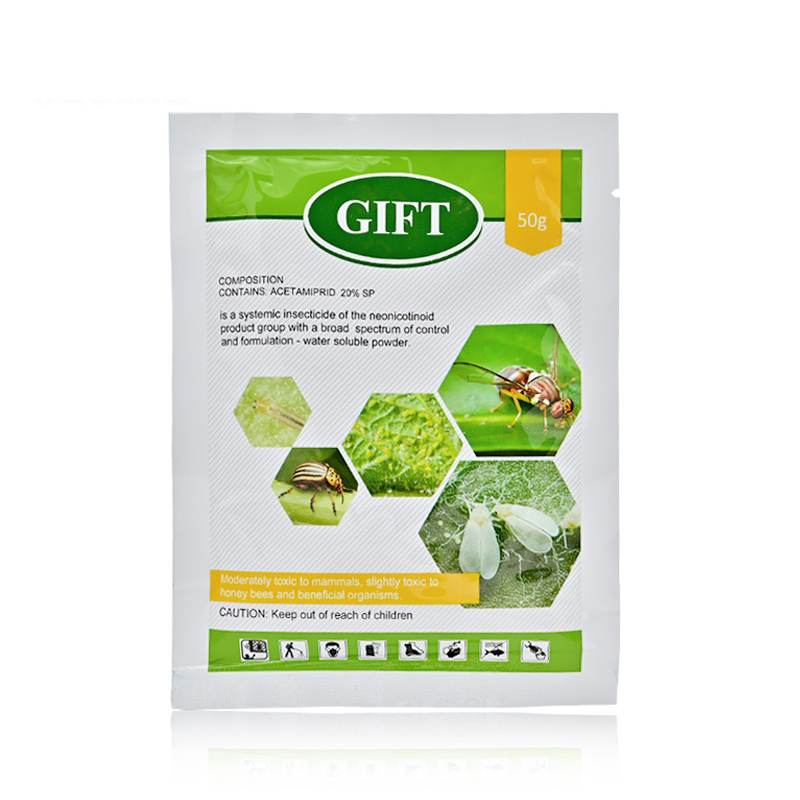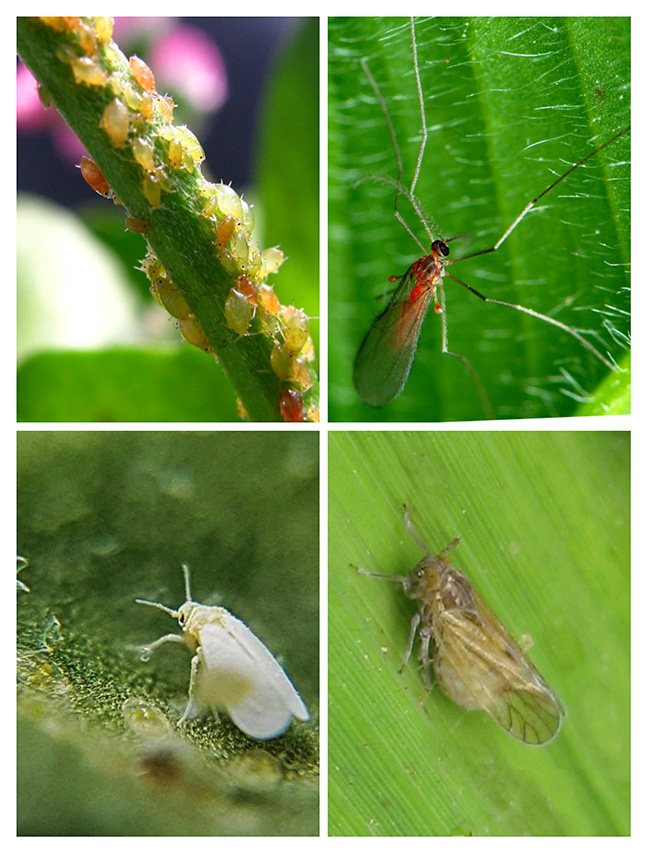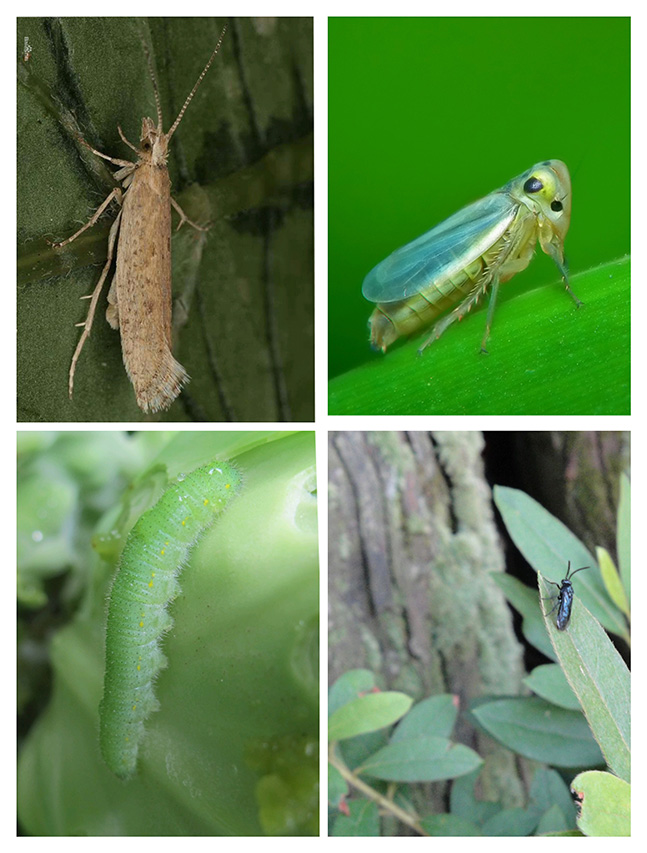Many people have reported that aphids, armyworms, and whiteflies are rampant in the fields; during their peak active times, they reproduce very quickly, and they must be prevented and controlled.
When it comes to how to control aphids and thrips, Acetamiprid has been mentioned by many people:
Here is a guide for everyone – “Acetamiprid Efficient Use Guide“.
Mainly 6 aspects, please sign for them!
1. Applicable crops and control objects
Acetamiprid, are all familiar. It has strong contact and stomach poisoning effects and can be used on many crops.
For example, in cruciferous vegetables (mustard greens, cabbage, cabbage, broccoli), tomatoes, cucumbers; fruit trees (citrus, apple trees, pear trees, jujube trees), tea trees, corn, etc.
Can prevent and treat:
2. Characteristics of Acetamiprid
(1)Pesticide is effective quickly
Acetamiprid is a chlorinated nicotine compound and a new type of insecticide.
Acetamiprid is a compound pesticide (composed of oxyformate and nitromethylene pesticides); therefore, the effect is very obvious and the effect is quick, especially for those who produce Insect-resistant pests (aphids) have excellent control effects.
(2)Long lasting and high safety
In addition to its contact and stomach poisoning effects, Acetamiprid also has a strong penetrating effect and has a long lasting effect, up to about 20 days.
Acetamiprid has low toxicity to humans and animals, and has little lethality to natural enemies; it has low toxicity to fish, has little impact on bees, and is highly safe.
(3)The temperature should be high
It should be noted that the insecticidal activity of Acetamiprid increases as the temperature rises; when the temperature during application is lower than 26 degrees, the activity is low. It kills aphids faster only when it is above 28 degrees, and it can be achieved at 35 to 38 degrees. Best results.
If it is not used at a suitable temperature, the effect will be insignificant; farmers may say it is fake medicine, and retailers must be careful to inform them of this.
3. Compounding of Acetamiprid
Many retailers and growers know that Acetamiprid is effective in killing insects, especially aphids, which we are most exposed to.
For some bugs, the use of compound pesticides can sometimes double the effect.
Below, Daily Agricultural Materials has sorted out 8 common Acetamiprid compound chemicals for your reference.
Mainly used for apples, wheat, citrus and other crops; used to control sucking mouthparts pests (apple woolly aphids, aphids, red wax scales, scale insects, psyllids), etc.
Note: After compounding, it is sensitive to tobacco and cannot be used on tobacco; it is toxic to bees, silkworms and fish, so do not use it during the flowering period of plants and mulberry gardens.
Mainly used for cabbage, rose family ornamental flowers, cucumbers and other crops; used to control aphids, American spotted fly.
Acetamiprid + Abamectin, has contact and gastric toxicity against the leafminer on cucumbers, along with a weak fumigation effect, and is very effective against aphids and other sucking mouthparts pests (aphids, diamondback moths, American leafminers) Prevention and control effect.
It also has a good penetration effect on the leaves, can kill pests under the epidermis, and has a long-lasting effect.
Note: Start spraying pesticides during the initial peak period of pests (flood outbreak), and adjust the dosage and frequency of use according to the severity of the pests.
(3) Acetamiprid+Pyridaben
Mainly used on apple trees and cabbage to control pests such as yellow aphids and golden flea beetles.
The combination of the two has a good control effect on the entire growth period of pests (eggs, larvae, adults).
(4) Acetamiprid+Chlorantraniliprole
Mainly used for cotton and apple trees; used to control bollworms, aphids, leaf rollers and other pests.
It has stomach poisoning and contact killing effects, strong systemic absorption and permeability, strong quick-acting effect and good long-lasting effect.
Note: It is recommended to use it during the special stages of aphids, cotton bollworms, and leaf rollers (from their peak to young larvae) for better results.
(5)Acetamiprid+Lambda-cyhalothrin
Mainly used on citrus trees, wheat, cotton, cruciferous vegetables (cabbage, cabbage), wheat, jujube trees and other crops to prevent and control sucking mouthpart pests (such as aphids, green bugs, etc.), pink bugs, etc. Lice, spider mites.
The combination of Acetamiprid+Lambda-cyhalothrin expands the types of insecticides, improves quick-acting effects, and delays the development of drug resistance.
It has very good effect in preventing and controlling insect pests of grain crops, vegetables and fruit trees.
NOTE: The safety interval on cotton is 21 days, with a maximum of 2 uses per season.
Mainly used on tomatoes and tea trees to prevent and control whitefly and tea green leafhoppers.
Bifenthrin has contact killing, gastric poisoning and fumigation effects, and has a wide insecticidal range; it acts quickly, is highly toxic, and has a long duration of effect.
The combination of the two can significantly improve the efficacy and reduce the harm to the applicator.
Note: For the key parts of tomatoes (young fruits, flowers, twigs and leaves), the dosage depends on the occurrence of insect pests.
Mainly used for cotton and corn crops to prevent and control aphids and wireworms.
Carbosulfan has contact and stomach poisoning effects and good systemic absorption. The highly toxic carbofuran produced in the body of pests is the key to killing pests.
After the two are combined, there are more types of insecticides and the control effect on cotton aphids is good. (It has good quick-acting effect, long-lasting effect, and has no impact on cotton growth.)
 4. Comparison between Acetamiprid and
4. Comparison between Acetamiprid and
Imidaclorprid
When it comes to Acetamiprid, everyone will think of Imidaclorprid. They are both pesticides. What is the difference between the two?
It should be noted that if you are still using Imidaclorprid, because of serious resistance, it is recommended to choose an agent with a higher content.
5. Safety interval of Acetamiprid
The safety interval refers to how long it takes to wait for harvesting, eating, and picking after the last pesticide spraying on crops such as grain, fruit trees, and vegetables to meet quality and safety requirements.
(The state has regulations on the amount of residues in agricultural products, and you must understand the safety interval.)
(1) Citrus:
·Use 3% Acetamiprid emulsifiable concentrate up to 2 times, with a safe interval of 14 days;
·Use 20% Acetamiprid emulsifiable concentrate once at most, and the safety interval is 14 days;
·Use 3% Acetamiprid wettable powder up to 3 times with a safety interval of 30 days.
(2) Apple:
Use 3% Acetamiprid emulsifiable concentrate up to 2 times, with a safe interval of 7 days.
(3) Cucumber:
Use 3% Acetamiprid emulsifiable concentrate up to 3 times with a safe interval of 4 days.
6. Three things to note about Acetamiprid
(1) When compounding Acetamiprid with pharmaceuticals, try not to mix it with alkaline pesticides and other substances; it is recommended to use it alternately with pharmaceuticals of different mechanisms.
(2) Acetamiprid is prohibited to be used during the flowering period of flowering plants, silkworm houses and mulberry gardens, and is prohibited in areas where natural enemies such as Trichogramma and ladybugs are released.
(3) Do not apply pesticides on windy days or when rainfall is forecast within 1 hour.
Finally, I would like to remind everyone again:
Although Acetamiprid is very effective, you must pay attention to the temperature. Low temperature is ineffective, but high temperature is effective.
When the temperature is lower than 26 degrees, the activity is low. It will kill aphids faster when it is above 28 degrees. The best insecticidal effect is achieved at 35 to 38 degrees.
Post time: Nov-13-2023









